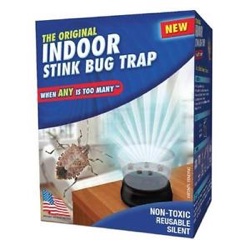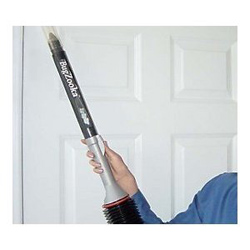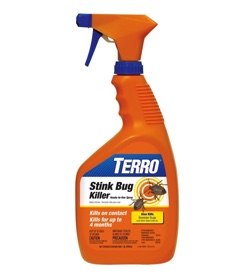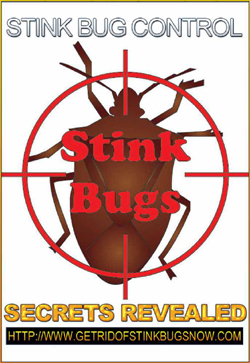
Stink Bugs and Stink Bug Control
Gardeners and farmers in New Jersey, Pennsylvania and other states are fighting Stink Bugs, invasive pests that are damaging crops from apples and grapes to tomatoes, cucumbers and soybeans. In the cooler weather they try to come into your house. Find out about them here.
Stink Bugs
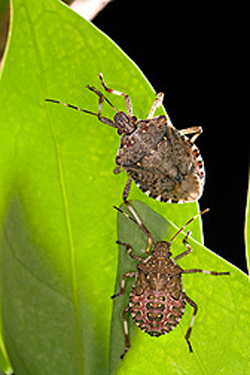
Stink Bugs
The brown marmorated stink bug can be a serious pest. It is an insect only recently seen on our continent. It was apparently accidentally introduced into eastern Pennsylvania as a cargo stowaway from Asia. It was first collected in 1998 in Allentown, but probably arrived several years earlier. The name "stink bug" derives from their tendency to eject a foul-smelling glandular substance secreted from pores in their thorax when disturbed.
Stink bugs are now found in numerous
states including: California, Connecticut, Delaware, Indiana,
Kentucky, Maine, Maryland, Massachusetts, Mississippi, New Hampshire, New Jersey, New York, North Carolina, Ohio,
Oregon, Pennsylvania, Rhode Island, South Carolina, Tennessee, Virginia, Washington, D.C. and West Virginia.
Sightings have also been reported in Alabama, Arizona, Colorado, Florida, Georgia, Illinois, Iowa, Michigan,
Minnesota, Missouri, Nebraska, Vermont, Washington, and Wisconsin.
This bug, of the insect family Pentatomidae, is known as an agricultural pest in its native range of China, Japan, Korea and Taiwan. Recently, the stink Bug has become more than just a pest by attacking fruit, vegetables and farm crops throughout the Mid-Atlantic region.
When the weather cools in the fall, stink bugs can also become a nuisance pest indoors as they seek a warm place to overwinter; like inside your house.
Damage They Do
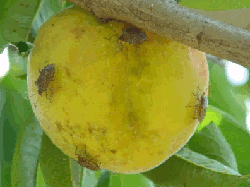
Sink Bugs Swarming on a Peach
Image credit: Rutgers
Stink bugs bugs are considered agricultural pests. They can create huge populations that suck plant juices, spread disease and damage crop production. They produce severe losses in apple and peach orchards by damaging the fruit. They have been found feeding on blackberrys, sweet corn, field corn and soybeans. They also damage tomatoes, lima beans, green peppers and cucumbers.
In New Jersey, several pepper growers reported up to 75% damage in their crops. Similar levels were seen in peaches and nectarines. The pest feeds on a wide range of crops and causes damage at every stage of its growth.
Stink Bug Control
This pest was introduced into the United States without having any natural enemies here, and therefore had no natural control mechanisms to keep its population in check. Because of this, the brown marmorated stink bug has reproduced and spread at an alarming rate. At present, there is no known solution to the stink bug problem. The bugs are resistant to many pesticides. They have no known enemies in our country.
In some countries, like Laos, they are are a highly regarded food item, and are considered delicious. The insects are pounded together with spices and a seasoning to prepare "cheo", a paste which is mixed with chilies and herbs.
Very detailed studies in biological control are currently being conducted by researchers at the USDA and State Land Grant Universities. Studied control options include studies on pheromones, as-well-as mass trappings. Biological control shows the most long-term promise for eventual control and management of this pest. Research is underway to identify egg parasitoids that will aid in control of the pest. Studies are being conducted at the USDA�s Biological Control Research Laboratory, and it is hoped that within a few years parasite releases can begin.
Although presently there is no solution to the stink bug problem, that doesn't stop aggressive individuals from hawking various traps and gizmos that they claim will at least help with the problem. All sorts of traps and bug-catching devices are being advertised; some available in hardware stores and garden centers. Maybe some of them would help,
.Four items advertised on Amazon.com to combat stink bugs are shown below.
Stink Bug Trap Indoor Stink Bug Trap
Bug Zooka Vacuum Stink Bug Spray
To see these devices on Amazon.com, click on the device's image above.
Mechanical exclusion is the best method to keep stink bugs from entering homes and buildings. Cracks around windows, doors, siding, utility pipes, behind chimneys, and underneath the wood fascia and other openings should be sealed with good quality silicone or silicone-latex caulk. Damaged screens on doors and windows should be repaired or replaced.
References
Brown Marmorated Stink Bug - Penn State College of Agricultural Sciences Entomology
Books About Stink Bugs and How to Control Them
Stink Bug Removal: How to Get Rid of Stink Bugs
- by Henry Moorecroft - 2012
Discover the secrets of how to get rid of stink bugs and how to prevent, control and get rid of them in the house as well as outdoors. They release an unpleasant smell, infest homes and gardens from spring through fall, and feed on plants. They are attracted to light. They are invading Pennsylvania, Maryland, Virginia, and Wisconsin. They will continue to spread. But you can stop them if you follow these special tips.
Stink Bug Control Secrets Revealed
- by William Campbell - 2010
Kindle Edition
In 2010, Bill Campbell relocated from New York to Pennsylvania and, within weeks, was greeted with a ferocious stink bug infestation in his new home. Not knowing what to do, he began to research the stink bug thoroughly and set about testing dozens of methods to get rid of them. This guide is the result of that work. In it, he tells the reader exactly how to get rid of existing stink bugs in the home, how to prevent them from returning, and even how to reduce the number of stink bugs on one's property. His strong preference is to use methods that are 100% natural and that are safe for pets and children. Insecticides are viewed only as a final, drastic alternative.

